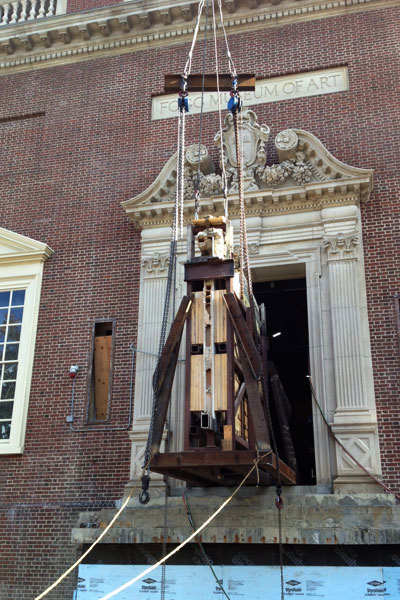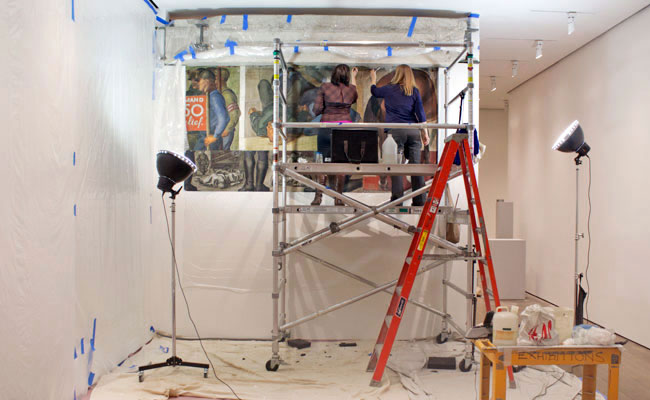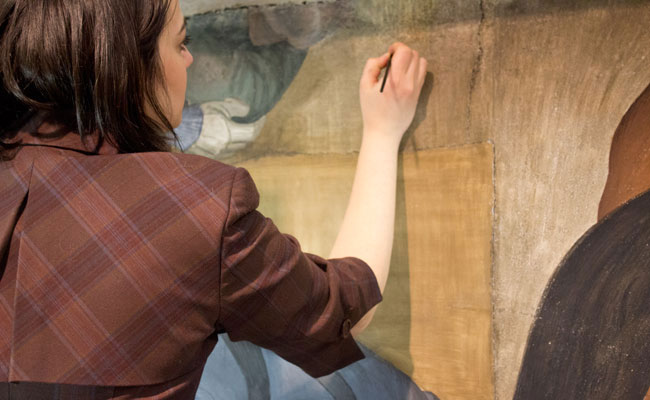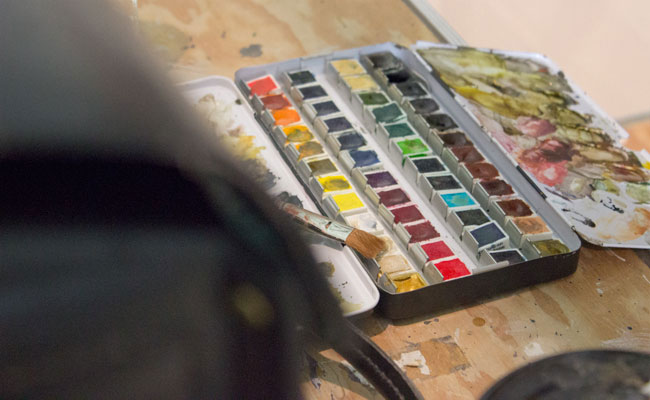Teri Hensick’s former workspace in the Fogg Museum included a unique—and seemingly immovable—work of art. “It was actually right over my desk,” the paintings conservator said. She’s speaking of the mural Hunger March (1933), a fresco by Lewis Rubenstein and Rico Lebrun. The mural is considered among the few true frescoes, an Italian technique of painting onto wet plaster, in the greater Boston area.
Originally located in the fourth-floor painting studio of the Fogg, the work is now on display in the new Harvard Art Museums facility, three floors down from where it once stood.
Such a move would be simple for a freestanding painting or sculpture. But for the 1930s fresco, painted directly onto the original masonry studio wall, the journey was far more involved. When the museums’ new design called for the mural to be moved, Hensick’s team, object conservators, and outside engineers and contractors had to determine how to safely protect, house, and transport the work of art—and how to remove the entire (approximately 5,000-pound) wall from the building.
To protect the delicate fresco, the mural was coated with cyclododecane, a waxy material that would sublimate when the move was completed. A barrier film was also applied to prevent the cyclododecane from disappearing prematurely. Padding, plywood, and a steel superstructure were added. Only then could engineers cut through the walls and roof beams, lifting the mural from the building with a gigantic crane and safely transporting it to storage.
“We were really happy that it all worked as we hoped it would,” Hensick said. “It was a thoroughly planned and executed project.”
Now that the mural has been safely returned to the museums, Hensick and two other conservators are making final touch-ups to the work, removing remnants of resin consolidant with scalpels and in-painting small losses with watercolors.
“It’s been a bigger part of my life than I ever could have imagined,” Hensick said, adding that the mural’s five-year odyssey was a true team effort. “It does look the same way it did above my desk. In fact, it looks a little better here in the gallery.”
For more about the work and its complex move, see the recent articles in the Boston Globe and the Harvard Gazette.





